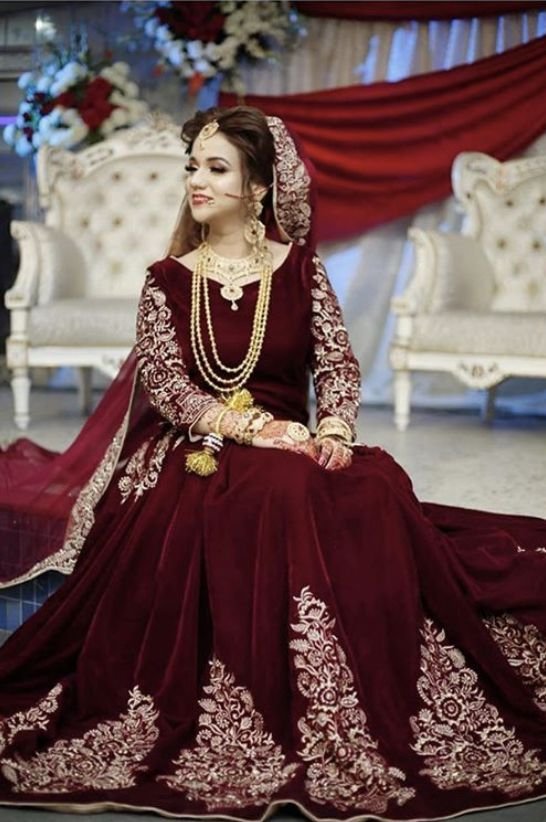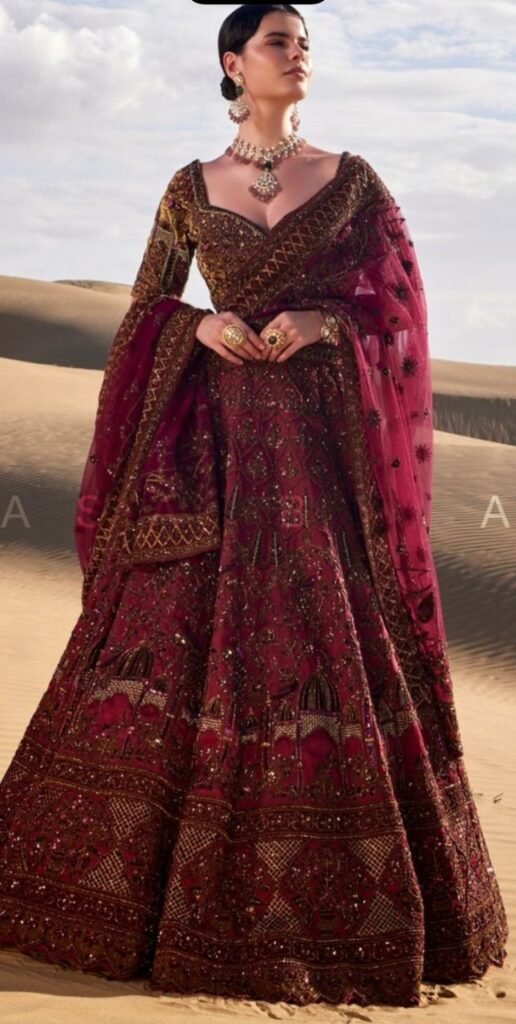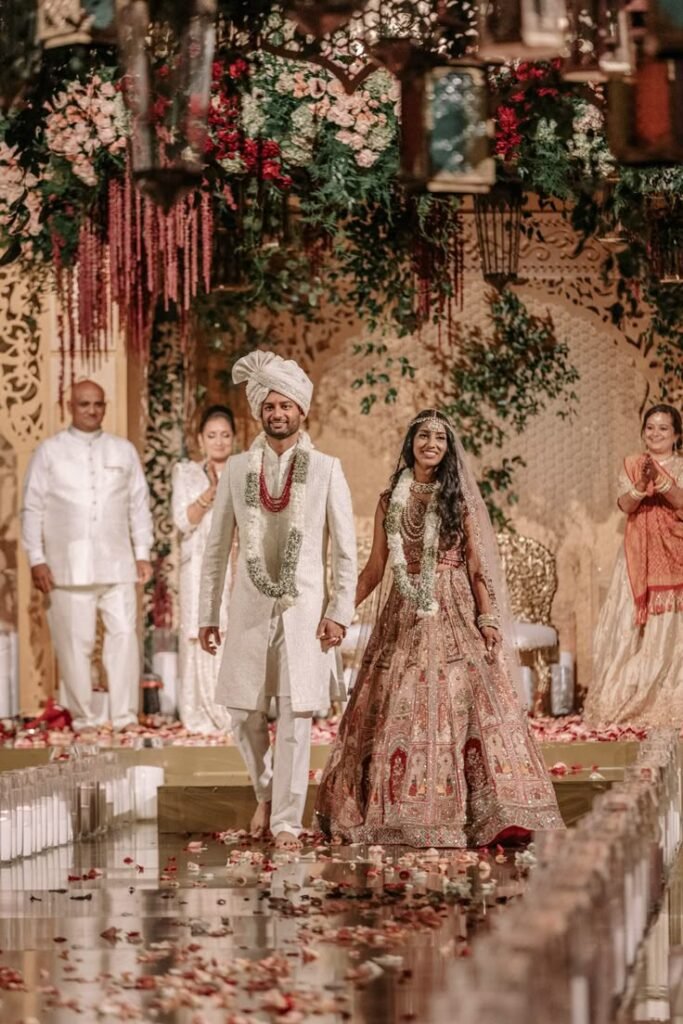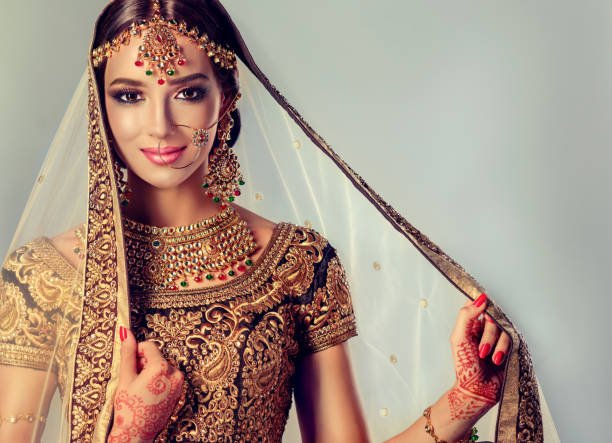The first time I attended an Indian wedding, I was mesmerized by the grandeur of the Indian wedding dress. The bride walked in wearing a heavily embroidered lehenga in deep red, sparkling with golden zari work. It wasn’t just clothing—it was a reflection of culture, tradition, and heritage. Indian weddings are celebrated worldwide for their vibrancy, and the outfits play a central role in creating that magical atmosphere.
In this article, I’ll share my experience with Indian wedding dresses, explain their cultural significance, explore different styles, and give tips for brides and guests on how to choose the perfect attire.
Why Indian Wedding Dresses Are So Special

Indian wedding dress
Unlike western weddings, where gowns are usually in shades of white, Indian wedding dresses are a celebration of colors. From deep reds to royal blues and soft pastels, every shade carries meaning. Beyond colors, embroidery, fabrics, and jewelry complete the look, making each bride appear like a queen.
For me, what makes Indian wedding dresses so captivating is how they blend tradition with evolving fashion trends. Whether it’s a classic red lehenga or a pastel gown with modern cuts, the essence of “royalty meets tradition” always shines through.
Types of Indian Wedding Dresses
Over the years, I’ve seen and even tried different styles of wedding attire. Each region in India has its own traditional outfit, making Indian bridal fashion diverse and fascinating.
1. Bridal Lehenga
The most popular choice for brides across India. It consists of a blouse (choli), a long embroidered skirt (lehenga), and a dupatta. Red is the traditional color, symbolizing prosperity and love, but modern brides experiment with pinks, pastels, and golds.
2. Saree for Weddings
A timeless choice, especially in South India and Maharashtra. Banarasi silk sarees, Kanjeevaram sarees, and Paithani sarees are iconic wedding picks. I remember attending a Tamil wedding where the bride’s golden Kanjeevaram saree shimmered beautifully in the temple lights.
3. Anarkali Suits
These floor-length gowns with heavy embroidery are often chosen for wedding receptions or pre-wedding functions. They give a regal yet comfortable vibe.
4. Sharara and Gharara Sets
Popular in North India and among Muslim brides, these outfits consist of flared pants, long kurtas, and dupattas with intricate work.
5. Indo-Western Bridal Wear
For brides who want a modern touch, gowns with Indian embroidery or fusion lehengas with capes are gaining popularity.
Colors in Indian Wedding Dresses and Their Meanings
One thing I love about Indian weddings is how color plays a symbolic role:
- Red: Love, passion, prosperity (most traditional choice).
- Gold: Wealth, luxury, and grandeur.
- Pink: Grace and femininity.
- Green: Fertility, harmony, and new beginnings.
- Blue & Purple: Royalty and power.
- White & Ivory: Once considered unconventional, now trending as modern and chic.
Fabrics Used in Indian Wedding Dresses

The richness of an Indian wedding dress often depends on its fabric. Some of the most loved ones are:
- Silk: Symbol of royalty, used in sarees and lehengas.
- Velvet: Adds a luxurious, regal look.
- Georgette & Chiffon: Light, flowy, and perfect for receptions.
- Net & Organza: Adds drama and elegance, often used for dupattas.
Embroidery and Detailing
What truly makes Indian wedding dresses stand out is the craftsmanship:
- Zari Work: Gold and silver thread embroidery.
- Zardozi: Heavy metallic embroidery, very royal.
- Mirror Work: Famous in Gujarat and Rajasthan.
- Sequins & Beads: Modern touch for glam weddings.
- Handloom Weaves: For brides who prefer traditional heritage weaves.
Indian Wedding Dress for Grooms
It’s not just brides who shine—grooms, too, wear regal outfits. Common choices are:
- Sherwani: A long coat-like outfit, usually paired with churidar pants.
- Achkan: Similar to a sherwani but lighter.
- Kurta with Jacket: Simple yet elegant for pre-wedding events.
- Royal Accessories: Safa (turban), brooches, and embroidered shoes complete the look.
Tips for Choosing the Perfect Indian Wedding Dress

Indian wedding dress
From my personal and observed experiences, here’s what works best:
- Consider the Venue & Season: Lighter fabrics for summer weddings, velvet or silk for winter.
- Balance Comfort with Style: Heavy embroidery looks beautiful but may feel uncomfortable for long hours.
- Match with Jewelry: Choose your outfit first, then jewelry to complement it.
- Trial & Alterations: Always do fittings well before the wedding.
- Budget Wisely: Designer lehengas can be expensive, but local artisans often create equally stunning work.
My Experience at an Indian Wedding

At my cousin’s wedding, I wore a pastel pink lehenga with silver embroidery. It wasn’t as heavy as a traditional red bridal lehenga, but it made me feel elegant and comfortable throughout the day. Watching the bride in her royal red Banarasi lehenga reminded me that Indian wedding dresses are more than fashion—they are traditions woven into fabric.
Conclusion
An Indian wedding dress is not just clothing—it’s a celebration of culture, heritage, and beauty. From lehengas and sarees to modern fusion gowns, these outfits carry stories of tradition while adapting to modern trends. Whether you’re a bride, groom, or guest, choosing the right attire makes Indian weddings truly unforgettable.
Frequently Asked Questions (FAQs)
1. What is the most common Indian wedding dress for brides?
The bridal lehenga is the most popular choice across India.
2. Can brides wear colors other than red?
Yes, modern brides often choose pink, gold, pastel, or ivory shades.
3. Which fabric is best for a wedding saree?
Silk sarees like Kanjeevaram or Banarasi are considered the best.
4. How much does an Indian wedding dress cost?
It can range from budget-friendly options ($100–$500) to luxury designer wear ($2,000+).
5. Do Indian grooms wear western suits?
Some do for receptions, but traditional sherwanis and kurtas remain popular.
6. Is it okay for guests to wear black at Indian weddings?
Black was once avoided, but today, it’s accepted if styled elegantly.
7. Can Indian wedding dresses be rented?
Yes, many boutiques and online stores offer rentals for lehengas and sherwanis.
8. What jewelry goes with Indian bridal wear?
Gold, Kundan, Polki, or diamond sets are popular choices.
9. How long does it take to make an Indian wedding dress?
Handmade lehengas or sarees can take weeks to months to complete.
10. Are Indo-western gowns acceptable at Indian weddings?
Yes, fusion styles are trending and widely accepted, especially at receptions.
